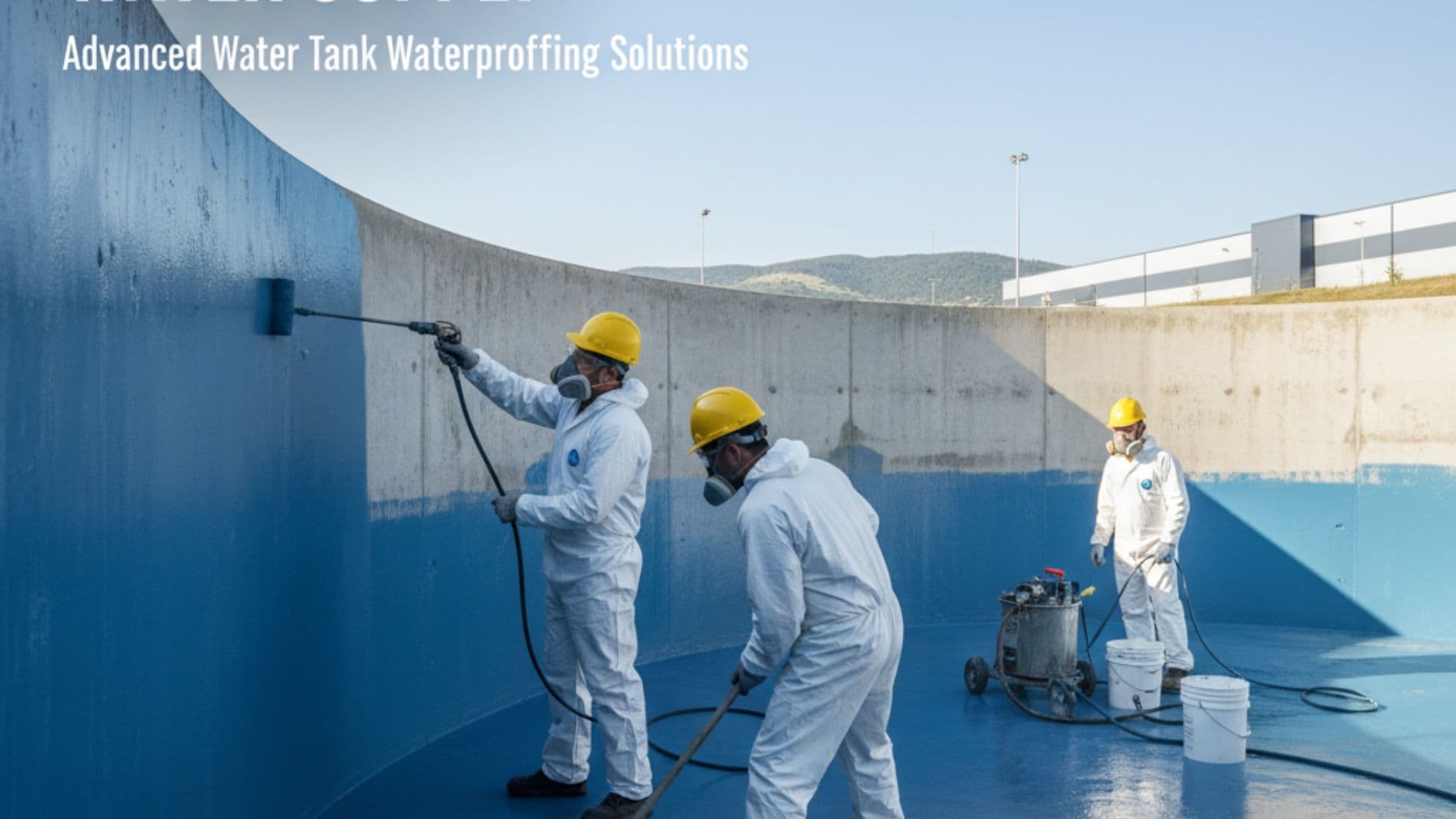Choosing the Right Waterproofing Solution for Your Watertank: A Complete Guide

November 14, 2025
Unlock expert insights on evaluating various waterproofing materials and methods. This guide clarifies selection criteria, cost factors, and application tips tailored for different watertank types.
Looking after your home or business means thinking about even the most tucked-away details—like your watertank. People usually forget about watertank waterproofing until a leak, odor, or water quality issue pops up. If you’re reading this, chances are you want to prevent those headaches, or maybe you’ve experienced one already. Whether your tank is plastic, concrete, overhead, or underground, this guide walks you through choosing the best waterproofing solution with clarity and real-world advice.
Why Watertank Waterproofing Really Matters
Let’s be honest: most of us don’t think twice about the tank that stores our water. It just sits there, working silently. But watertank waterproofing is key to clean water, better health, and peace of mind. Think of it as a security layer for your daily life.
For example, some families in humid climates deal with frequent leaks and water contamination from neglected watertanks. It’s not just inconvenient; it can compromise drinking water and hygiene, sometimes leading to costly repairs or health problems. By making smart waterproofing choices, you keep your water safe—and avoid stressful surprises. Even business owners count on watertank waterproofing to protect inventory and keep operations running smoothly.
Main Waterproofing Materials: Comparing Your Options
When it comes to selecting the right watertank waterproofing method, you’ll notice several materials on the market. Each has its pros, cons, and best-use scenarios.
- Cementitious Waterproofing: Often used for concrete tanks, this method is affordable and simple. The downside? It can crack over time, especially in areas that experience structural movement.
- Liquid Membrane Systems: These coatings form a seamless waterproof layer that flexes nicely. Polyurethane and acrylic membranes are popular choices. They require careful application but are known for lasting performance.
- Bituminous Coatings: Bitumen-based solutions offer reliable protection on underground and masonry tanks. They’re budget-friendly but can deteriorate under extreme sunlight or heavy usage.
- Epoxy Treatments: Epoxy is super tough and resistant to chemicals, making it great for industrial uses or tanks that store more than just water. It’s pricier, but the longevity can offset the cost.
Let’s say you’ve just built a new concrete overground tank. Cementitious waterproofing could be a good starting point, but if the area gets frequent temperature swings, a flexible liquid membrane might serve you better in the long run.
Choosing Based on Tank Type: It’s Not One-Size-Fits-All
Not all watertanks are created equal, and neither should your waterproofing method be. Here’s how to match your solution with your tank type:
- Plastic or Polymer Tanks: These usually come pre-molded and are less prone to leakage. But over time, UV exposure and wear can degrade their surfaces. A UV-resistant liquid membrane can add an extra layer of security.
- Concrete Tanks: Prone to micro-cracks, these require strong and flexible waterproofing. Cementitious coatings or epoxy systems both work, depending on your budget and local climate.
- Underground Tanks: Here, moisture and soil chemical exposure are the enemies. Go with heavy-duty bituminous coatings or double-layered membranes that can withstand ground pressure.
Consider a client I worked with who had persistent leaks in their underground tank. Switching from a basic cementitious system to a bituminous membrane solved the problem—and spared them countless repair bills.
Application Tips for Long-Lasting Results
Getting watertank waterproofing right isn’t just about picking the material. It’s also about how—and when—you apply it. Skipping steps can lead to weak spots, while proper prep ensures maximum durability.
- Surface Prep: Clean your tank interior thoroughly. Remove dust, algae, and old residue so the coating bonds as intended.
- Weather Check: Apply coatings in dry, moderate conditions to avoid poor adhesion or streaking.
- Multiple Layers: For most systems, two or three coats work better than one thick layer. Follow product instructions for best results.
A local installer once shared that skipping a final rinse led to a patchy waterproof layer—and an unhappy homeowner. Simply put: small details matter.
Cost, Sustainability, and Quality Factors to Consider
With waterproofing, “cheap and quick” can turn expensive if repairs pop up later. Here’s what to keep in mind before buying:
- Estimate total cost, not just product price—factor in prep, labor, and lifespan.
- Check for eco-certifications, especially if you store drinking water. Some coatings release solvents or VOCs best avoided.
- Ask for warranty terms. Quality suppliers often stand by their products for 5+ years.
Don’t hesitate to talk to local contractors or seek reviews from people who have used similar solutions in your climate. A trustworthy expert gives practical advice based on experience, not one-size-fits-all promises.
How to Pick the Best Watertank Waterproofing for Your Needs
Before you invest, take a moment to look beyond product specs. Here’s a simple checklist:
- Is the product suitable for your watertank material and location?
- Does it meet potable water safety standards, if needed?
- What maintenance does it require—and is that realistic for you?
Seeking watertank waterproofing advice? Reputable contractors will inspect your tank, discuss your budget, and walk through application steps. If you’re going DIY, stick to trusted brands, read reviews, and never skip prepping the surface.
Conclusion: Keep Your Water Secure & Your Mind at Ease
Choosing the right waterproofing solution for your watertank isn’t just about avoiding leaks—it’s about protecting your family’s health, your property’s value, and your own peace of mind. Whether you’re dealing with new construction or giving an old tank some TLC, remember: invest a little time in picking the right method now, and you’ll save time (and stress) later.
Ready to get started? If you need personalized tips or professional help, reach out to a trustworthy local waterproofer today. Your water—and your wallet—will thank you.